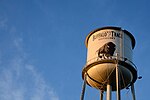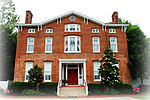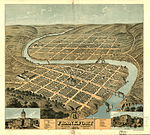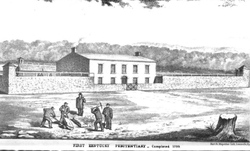Beeches (Frankfort, Kentucky)
Beeches is a brick house in Frankfort, Kentucky whose main block was built in 1818. In 1979, when it was listed on the National Register of Historic Places, it was in a great lawn in a park-like setting, in contrast to 20th century encroachments on all sides.It was deemed notable as an outstanding Federal-style structure and as one of just two surviving nineteenth-century buildings along the Leestown Pike in Franklin County, Kentucky. The other building, Glen Willis, one-fourth mile to the southwest, was already listed on the National Register.It has a one-and-a-half-story section that was a c.1800 brick house, and a two-and-a-half-story main block, also in brick. It has later brick and frame additions to the rear and east side.
Excerpt from the Wikipedia article Beeches (Frankfort, Kentucky) (License: CC BY-SA 3.0, Authors).Beeches (Frankfort, Kentucky)
Wilkinson Boulevard, Frankfort
Geographical coordinates (GPS) Address Nearby Places Show on map
Geographical coordinates (GPS)
| Latitude | Longitude |
|---|---|
| N 38.212777777778 ° | E -84.866944444444 ° |
Address
Wilkinson Boulevard 1032
40601 Frankfort
Kentucky, United States
Open on Google Maps








